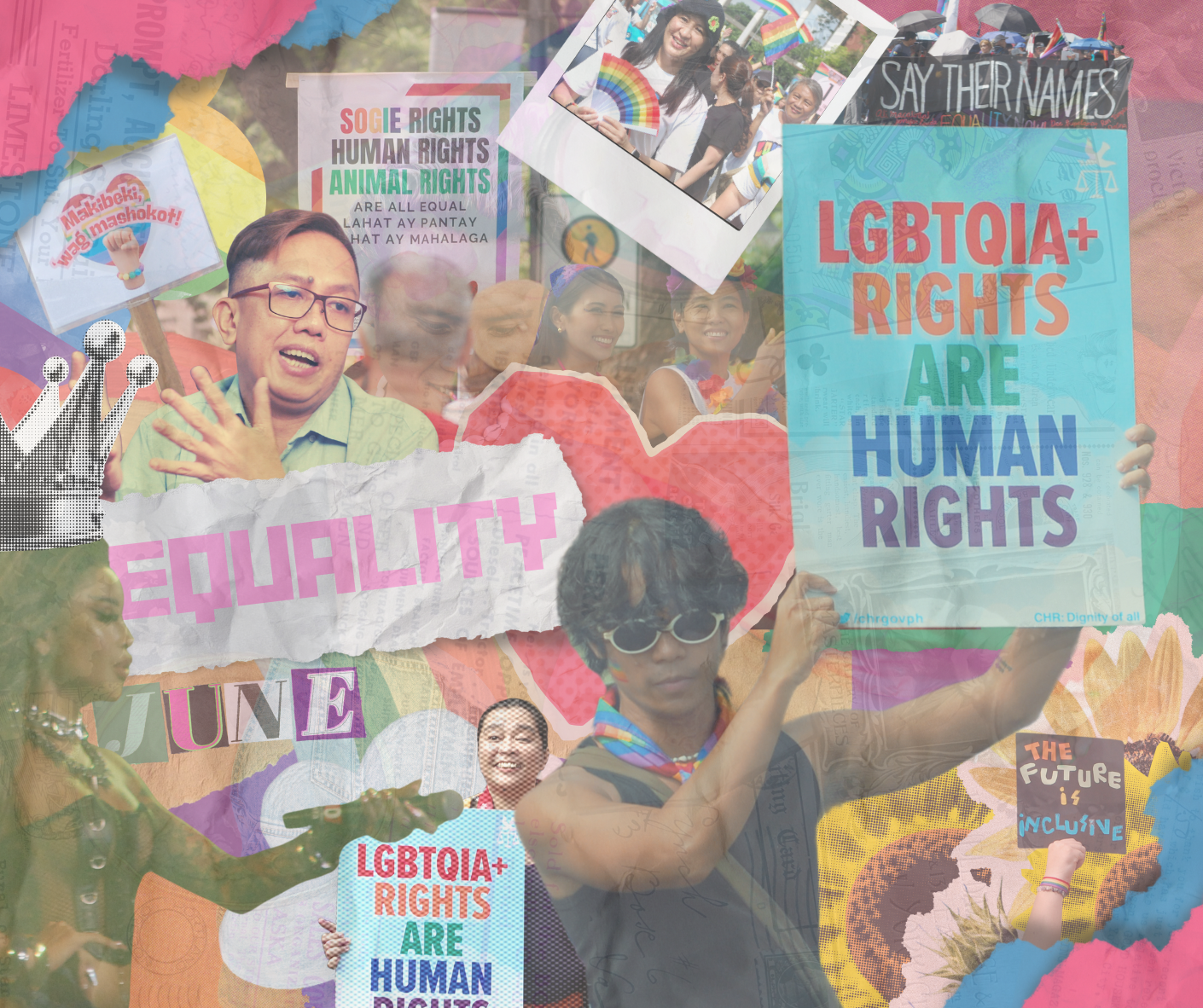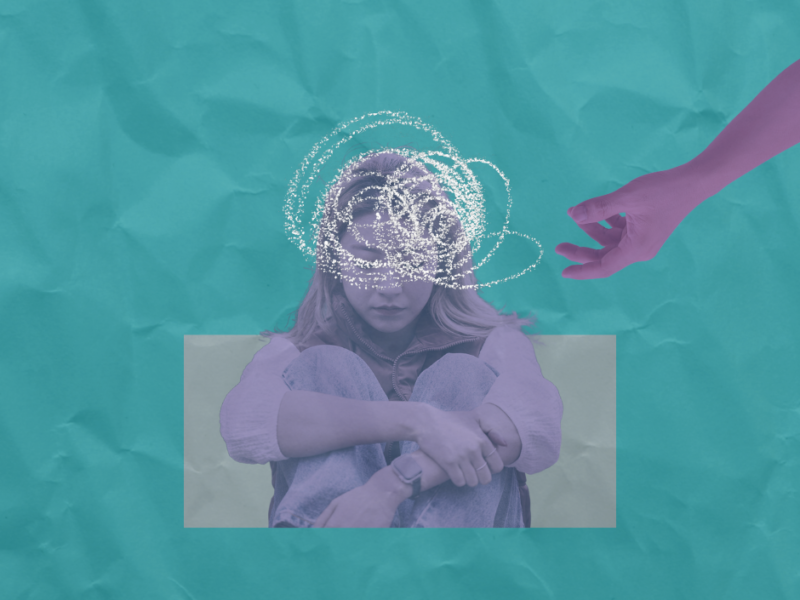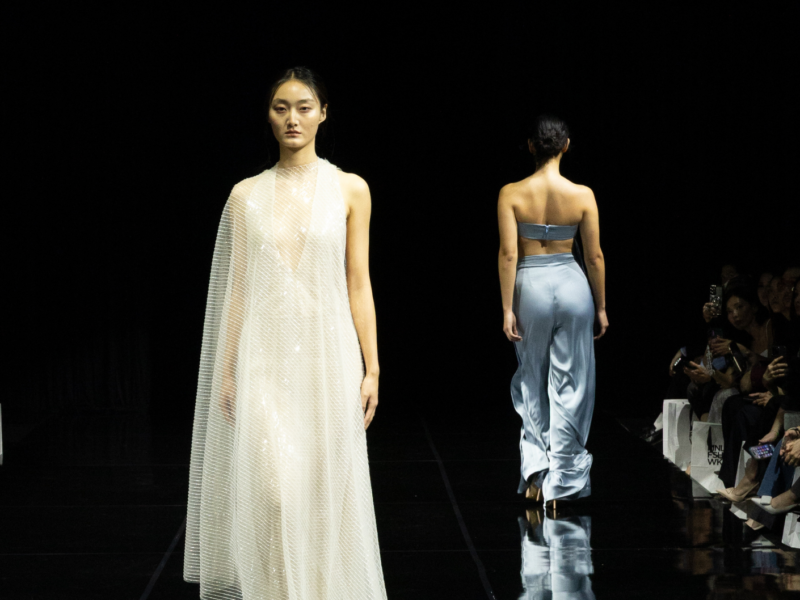The fight for queer rights in the Philippines: where it’s at and where it might be headed.
Perci Vilar Cendaña has been marching for queer rights since 1996—yet on June 23, 2025, he said that people like him still have a long way to go.
He was in Quezon City (QC) when he acknowledged this. In his office, his hands were framing the corner of a long wooden table. “Andito palang tayo [we’re still here,]” he said. He then reached for the other end of the surface while his face held a stern look behind bronze-framed glasses. “Ang layo pa natin doon [we’re still far from there.]”
“Here,” of course, is the current status of the LGBTQIA+ in the Philippines, a country repeatedly mischaracterized as one of the most queer-friendly nations in the world.
It is a figment held together by some facts and among them are survey numbers. In 2013, for instance, a study by the Pew Research Center found that around 73 percent of Filipino respondents believed homosexuality should be accepted by society. Six years later, that level of acceptance remained the same. These figures are relatively high compared to those in neighboring countries. Just look at Malaysia; 86 percent of people surveyed by the group in 2013 believed that homosexuality should be discouraged. That’s nearly the opposite of the Philippine numbers.
Furthermore, queer people in the Philippines are highly visible—and just as apparent are the venues and services that cater to them.
But then, there are other facts which Cendaña took note of–facts that dispel the figment.
“Here,” in the Philippines, same-sex couples can’t get married, and are barely recognized by the state. Only in big cities are there government-sponsored measures that allow them to get a fraction of the rights married couples have (like the Right to Care card of QC which allows queer couples to make medical decisions for each other.)
It is also “here” in the Philippines where trans people can’t legally update official documents to reflect their gender identity. In some cases, they can’t even present their authentic selves without fear of violence or discrimination.
And, finally, it was “here” where a young Cendaña began marching for the better treatment of queer people. In the late ’90s, he then moved from what he called “the parliament of the streets” to the actual “parliament,” assisting in the creation of a bill meant to protect queer folks from discrimination.
More than two decades later, Cendaña and his allies are still “here”—fighting the same fight. His devotion to this and other queer-related causes has been such that his colleagues have come to affectionately call him “Mader,” a Filipino transliteration of “mother.”
Alongside activists who weren’t even born when the first version of the bill was filed, they are still working to convince lawmakers to do right by their community: to finally pass a measure that would protect queer people from discrimination based on their sexual orientation, gender identity and expression, and sex characteristics (SOGIESC.) This is a battle that started more than two decades ago, and it’s still going.
“More than 25 years na, hindi pa rin pumapasa. [It’s been more than 25 years and it still hasn’t passed,]” he said. “Matigas pa rin ang ulo ng mga nakaupo sa kapangyaringan [The people in power are still stubborn.]”
But then his assessment of the country continued, touching on some of the reasons why he remains hopeful.
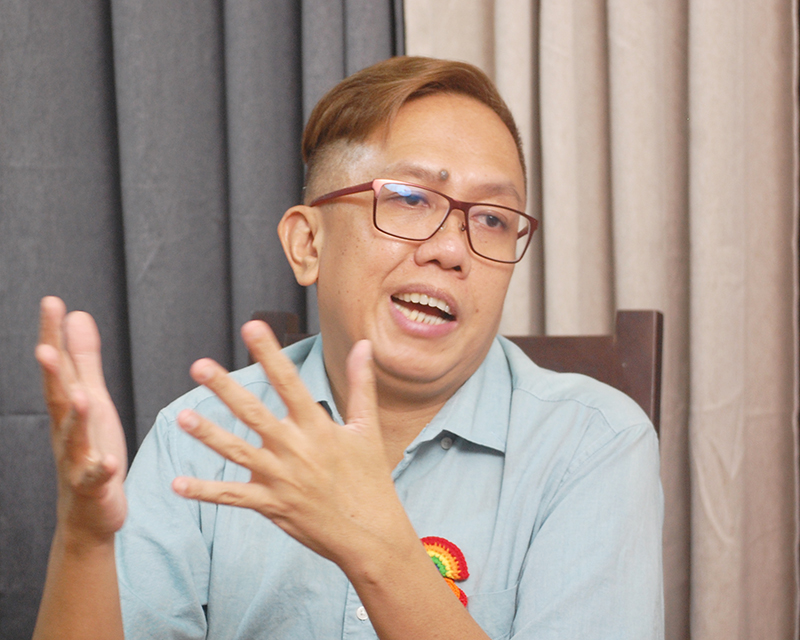
Just recently, Cendaña was reelected to Congress as a representative of the Akbayan Citizens’ Action Party. Pre-election surveys predicted that his group—progressive and long targeted by disinformation networks because of their criticism of populist government officials—would only secure enough votes for a single seat. Their performance was expected to pale in comparison to other parties, especially those endorsed by powerful political figures like the incumbent Philippine President Ferdinand Marcos Jr. and his now-bitter rival, Vice President Sara Duterte.
In the Senate, meanwhile, candidates verbally loyal to the Duterte family (while being notoriously against progressive legislation) were also expected to dominate.
But then the results came in. Akbayan received the highest number of votes among party-lists, securing three seats in Congress. Cendaña, now dubbed by “CongMader (since “Mader” became a “cong–gressman”) won’t just be returning to a position of power; he will also be joined by his fellow reform-oriented Akbayan representatives, Atty. Chel Diokno and Dadah Kiram Ismula. Meanwhile, in the Senate, Bam Aquino garnered the second-highest number of votes, while Kiko Pangilinan placed fifth. Both secured their seats on platforms that promised to uphold progressive ideals.
For Cendaña, this could mean at least one thing: hope. It could mean that the political landscape in the country is starting to shift in favor of left-leaning politics—especially since more of the younger generations are now old enough to vote. Perhaps, he said, it won’t be long before the forward-thinking preferences of these voters start affecting the positions of politicians in the country. And perhaps through this shift, the long-stalled, repeatedly renamed SOGIESC Equality Bill—the anti-discrimination measure that Cendaña and his allies have been persistently fighting for—might finally be passed.
But then the sternness returned to his face. Cendaña said that if that happens, it would just be a step, one of the many that this country needs to take to distance itself from the past that caused all of this to begin with.
Still Stigmatized and Discriminated Against
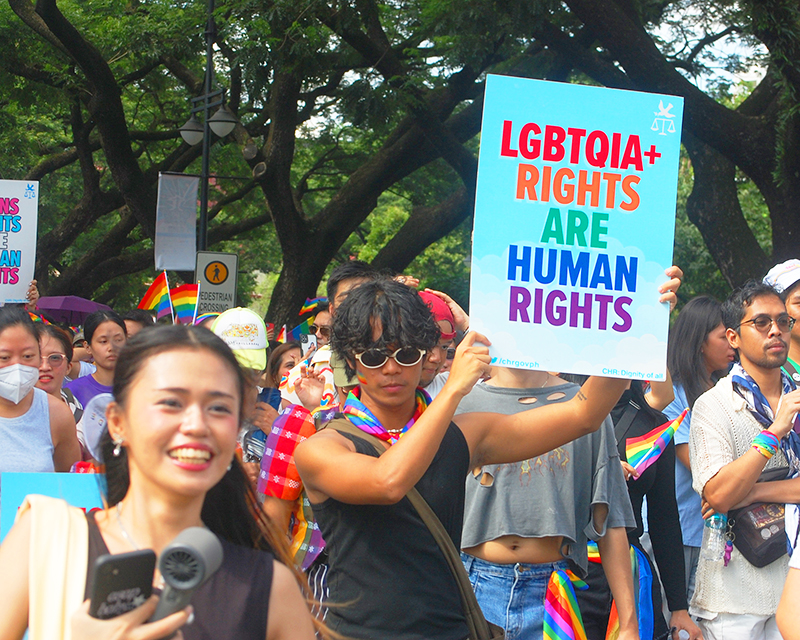
Like many advocates for queer rights in the country, Cendaña believes that the struggles faced by the LGBTQIA+ in the Philippines stem from the nation’s colonial past. He spoke about this during a Pride Month web event held at the height of the COVID-19 pandemic.
According to him, before the arrival of the Spaniards, Filipinos had higher regard towards women and queer individuals. Some even occupied positions of power. The babaylans and catalonans, for example, were revered as spiritual leaders and healers who led communities alongside datus and pandays. There were also the asogs—men who were said to have lived like women while performing roles similar to those of the babaylans. These individuals were embraced and respected by their communities, not ostracized.
When the Spaniards came, they slowly sought to undermine these figures to install rigid gender roles, and make Philippine communities more patriarchal–an ideal environment for the men they dispatched to enforce their will upon the country (like the friars.)
Women were ultimately subordinated to men—kept away from leadership roles, and conditioned to be modest, obedient, and domestic. Queer people, meanwhile, were demonized, labeled as sinful and unnatural. At the time, Spanish authorities were even ordered to burn known “sodomites” at the stake.
It’s been centuries since the Spanish occupation, yet the current state of Philippine culture shows that the country has yet to fully free itself from the legacy of its colonizers—even as it celebrates its independence each year (during Pride Month, no less).
Deeply patriarchal norms continue to shape society; women can still be constrained by limiting stereotypes. Queer people, meanwhile, remain vulnerable to prejudice—and the violence and abuse that often come with it.
In the Philippines, a significant portion of the population continues to use religious beliefs and texts to rationalize the mistreatment of queer people. Some still view queerness as a choice, thereby justifying its condemnation as a sin. As a result, it’s not uncommon to see supposedly religious individuals trying to invade Pride events, broadcasting their judgment or disapproval through stark placards, pamphlets, and, sometimes, even brazen speech. Others express their prejudice within schools, workplaces, government institutions, and private homes, carrying out acts that gradually erode safe spaces for the LGBTQIA+ community. Many also bring their bigotry online, posting or commenting with the intent to shame, undermine, or stigmatize queer people. These messages often paint queerness as a form of moral decay; others try to invalidate the feelings of queer people by proclaiming that they only use love as an excuse for “immorality.” Some also use medical realities, like the number of queer people who have HIV cases in the Philippines, to justify prejudices and the vilification of queerness in general.
Queer individuals are also frequently subjected to microaggressions. Successful members of the LGBTQIA+ community, for example, often receive backhanded compliments that frame their accomplishments as compensation for their queerness. It’s not unusual for them to get comments like, “At least you’re successful, even though you’re [insert queer label here.]” Others encounter remarks that diminish their successes and favorable traits entirely. For instance: “sayang, bakla ka” (“It’s a shame you’re queer.”) These subtle slights back the notion that queerness is a flaw—something to be overcome, excused, or regretted.
Overall, such behaviors reinforce discrimination, which has, historically, led to dehumanization and violence.
There are numerous examples of this. A high-profile case was that of Jennifer Laude, a trans woman who was killed in Olongapo by U.S. Marine Joseph Scott Pemberton in 2014. Pemberton reportedly ended Laude’s life after they checked into a motel and he discovered she was transgender. His charge was downgraded from murder to homicide in 2015, and, in 2020, he was granted an absolute pardon by then-President Rodrigo Duterte, who offered little justification for the decision.
More recent cases occurred in 2021. In May of that year, Ebang Mayor, a trans man, was found dead in QC with a 12-inch wooden stick forcibly inserted into his genitals. One of the perpetrators, a childhood friend, later confessed that he and two others had raped and murdered Mayor after a drinking session. That same year, the body of Jhie Bangkiao, a transgender woman, was found naked and lifeless in the middle of a cemetery in Alangalang, Leyte. Both bodies were found just days after May 17, the International Day Against Homophobia, Biphobia, Intersexism, and Transphobia.
Also in 2021, Amnesty International looked into the culture of hate crimes in the Bangsamoro Autonomous Region in Muslim Mindanao. According to Rocky Rinabor, Amnesty International Philippines Board Member and Deputy Executive Director of the Pioneer Filipino Transgender Men Movement, queer people in their area are often subjected to hate crimes and gender-based violence.
This is what he said: “We are used to being caught in the middle of unlawful raids as if they were witch hunts, in places where the LGBTQI+ are often seen – in karaoke bars, or salons and other establishments managed by trans women, often to instill fear by setting these places on fire or drive-by shootings.”
He also stated that there are stories of Muslim lesbians who were subjected to what is called “curative rape” which is supposedly done to—as the name suggests—“cure” their homosexuality.
At the University of the Philippines (UP) Diliman in 2024, queer rights advocate Bryon Senga is no stranger to the difficult realities the LGBTQIA+ face in the Philippines. As a member of queer advocacy group Babylanes, Inc., and a SOGIESC consultant for the UP Center for Women’s and Gender Studies, he regularly faces data suggesting that stigma and discrimination are still the primary stressors of the LGBTQIA+ in the Philippines.
“LGBTQ persons are still looked down upon [in the Philippines,]” he said last year. “Even if we see LGBTQI persons out there, they live very precariously.”
And that precarity, he added, comes from the fact that queer people are easily (and often) vilified because of their queerness.
“Stigma and discrimination happen all over,” he said. “They just manifest in different ways depending on your level of privilege and positionality.” For example, some lose their jobs while others get killed.
The damage of this culture could be gleaned from a document that caught his attention that year. It was a survey conducted by the Trevor Project, a non-profit organization focused on suicide prevention. In 2024, the group released a study that ultimately counted the responses of around 5,500 LGBTQIA+ youths in the Philippines. It found that about 75 percent of the respondents considered suicide. 46 percent of them have also attempted suicide, and 34 percent attempted suicide in 2023. 62 percent of them reported symptoms of depression, 62 percent reported symptoms of anxiety, and 59 percent engaged in self-harm. 63 percent of them also saw their identity as a burden, and 58 percent of them did not feel comfortable being themselves around other people.
‘Nearly three-quarters (74 percent) of LGBTQ+ young people in the Philippines reported that they
had… been discriminated against due to their sexual orientation or gender identity,” the report added. “More than one-third (34%) of LGBTQ+ young people reported being physically threatened or
abused due to their sexual orientation or gender identity.”
This study, however, focuses solely on the youth. According to Senga, there remains a shortage of data on queer adults due to a combination of factors. For one, while the public sector has made efforts to better understand the LGBTQIA+ community in the Philippines, the advanced data-gathering methods needed to survey them accurately have yet to become widespread across government agencies. Additionally, he suggested that the persistent threat of stigma and discrimination may discourage individuals from participating in surveys that would identify them as queer.
As a result, the state lacks the necessary information to properly assess and respond to the community’s needs. And there it was—yet another reason why discrimination and stigma may be the primary problems for queer people in the country.
There is a possible solution to this, Cendaña said. But there are those in power who have shown repeatedly that they don’t want it.
Marching On
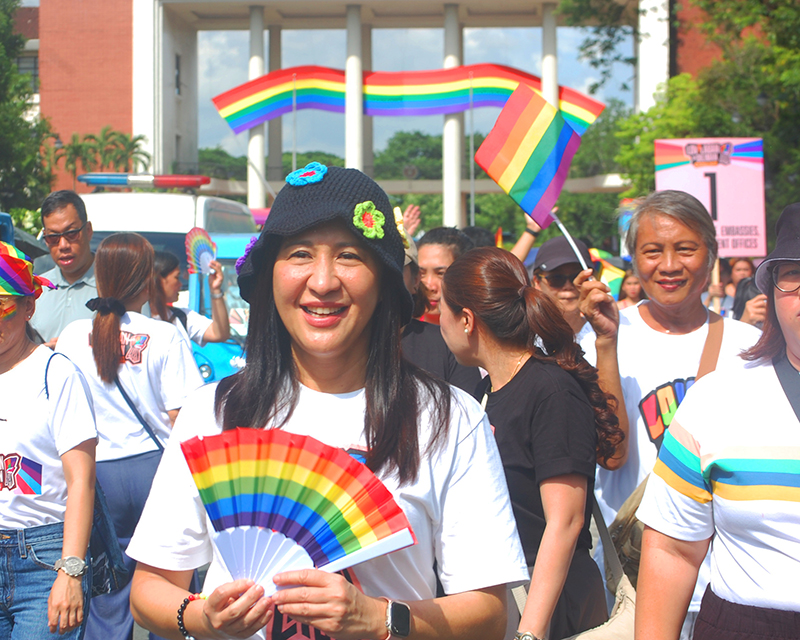
The SOGIESC Equality Bill is simply the latest iteration of a long-contested measure aimed at protecting individuals from discrimination based on their SOGIESC. If some lawmakers are to be believed, however, the bill could also pave the way for the legalization of same-sex unions in the Philippines and potentially restrict religious groups from expressing condemnation toward queer individuals. As attractive as those scenarios may be for some queer people, even the supporters of that bill say that these are unlikely.
During the 19th Congress, the bill faced many misinterpretations, which its supporters worked to refute. Among its defenders was Jap Ignacio, currently the Executive Director of Babaylanes Inc.
When former Senate President Vicente “Tito” Sotto III said that the bill may be a way to “smuggle gay marriage” into the country, Ignacio said that this will not be the case since the bill is merely touching on individual rights.
“We’re not yet talking about the property rights of same-sex couples,” he said. “We’re not yet discussing the recognition of marriage of two people of the same sex.”
Then there’s incumbent senator Joel Villanueva who alleged that the bill may step on “religious freedoms.” His imagined scenario saw the bill being used to prevent pastors and their ilk from preaching against the LGBTQIA+. Ignacio rebutted this by saying that the bill is “very clear” when it comes to identifying places of worship. And in those places of worship, religious leaders can preach whatever they want.
Then there are the people who say that the bill gives “special” privileges to a small portion of the population. But to Cendaña, such a belief is normally harbored by people who seem to misunderstand the bill’s nature.
“This is not about special rights,” he said since the bill is meant to protect everyone from being discriminated against based on their SOGIESC; it just so happens that queer people tend to be the ones targeted because of those aspects of their identity.
“So, this is an actual legislative gap that we are filling,” he said. “Ginawa natin ito para sa karapatan ng mga kababaihan… para sa karapatan ng mga kapatid nating IP, para sa mga kapatid nating PWD or specially abled. [We did this for women’s rights… we did this for our indigenous people, we did it for the PWDs or specially abled.”]
And he has more to say in defense of this bill but the problem is, the right avenues are not always open to him. Cendaña shared that there is currently an ultra-conservative lobby that actively exploits the system to halt the bill’s progress.
“They’re actually blocking it,” he said. According to him, he would like the bill to reach a point where lawmakers can properly debate the bill before the scrutiny of the public, but some members of Congress use various delaying tactics to stall it.
“At ang sense ko, kaya dine-delay ng mga legislators… kasi alam nila sa dulo, medyo may laban, [I think that they’re delaying it… because they know that, in the end it, stands a chance,]” he said.
He also has another theory. He thinks that some of the legislators who employ these delaying tactics do so because even though they’re against the bill due to their conservative leanings, they do not want to get to a point where their only way to stop it is to openly vote against it and “be counted as anti.”
Why? Because politicians these days have more of a reason to be cautious if they want to retain their power.
Cendaña credits the younger generation—they who have greater access to information and have, for the most part, become more progressive because of it; they who now benefit from the policies and norms shaped by the research and discourse of earlier generations.
Many have already made their presence felt during the campaign period for the 2022 national elections, even before they were of legal voting age. They came out in droves to support former Vice President Leni Robredo—a candidate known for her forward-thinking promises and a track record that made them believable.
Robredo, a frequent target of state-aligned disinformation campaigns, ultimately lost to Marcos Jr. But in Cendaña’s view, the youth did not lose their fight—especially now that many have reached voting age and were instrumental in Akbayan’s surprisingly strong performance in the polls.
“I would usually tell people [my favorite] story from the 2022 elections,” he said. “[There is this one group named] RPC of Santa Rosa, Laguna… They began in 2022.”
They weren’t all voters at that time, he shared. And members of the group only learned how to participate in campaigns as volunteers that year. But in a span of three years, they’ve become what he now calls “campaigners par excellence.”
“Ang galing-galing mangampanya, ang galing-galing mag-communicate ng mga bagay [They were so good at campaigning and so good at communicating things,]” he said. “Kaya hindi ako na-surprise na yung Akbayan nag number one sa Laguna [That’s why I’m not surprised that Akbayan was number one in Laguna.]”
And this is just one group, a fraction of the youth slowly gaining power. The people who voted for the likes of Akbayan will likely vote again in the next election. And their numbers can swell—perhaps even enough to affect legislation.
“I think napakahalagang i-recognize yung results ng 2025 elections as a turning point [I think it’s important to recognize the results of the 2025 elections as a turning point,]” he said. For a long time, many people thought that only a small portion of the population cared about LGBTQIA+ rights, he added. But his experiences during the last campaign season suggested a different reality.
“Maraming mga volunteers sa kampanya, young people [A lot of volunteers during the campaign season were young people,”] he said. “Young people who are also LGBTQIA+, or young people who are supportive of equality… Dahan-dahan, nagiging election issue na rin ang LGBTQIA+ rights. [LGBTQIA+ rights are slowly becoming an election issue.”]
2025 senatorial candidate Heidi Mendoza knows this. Once a hopeful endorsed by numerous high-profile queer voters (because of her stance against corruption,) the former commissioner of the Commission on Audit lost influential voters from the LGBTQIA+ after a campaign event revealed that she does not support same-sex unions.
Mendoza didn’t get enough votes to become a senator. And while it is unclear as to whether or not queer voters would support again her if she decides to have another crack at an elected post, Mendoza has acknowledged that her stance was hurtful. She even promised to “not block” civil unions from passing should she ever be put in the position to decide. She also made it clear that she intends to “learn” more from this campaign issue.
“So, I hope that politicians will look at 2025 as a sign that there is a growing constituency for gender justice and gender equality,” Cendaña said.
Until then, however, he and his allies intend to pursue other ways to further the cause of queer people. The 20th Congress of the Philippines will convene on July 28, 2025. After which, Cendaña intends to again push for the SOGIESC Equality Bill and other measures. There is an anti-hate crime bill in the works. There is also a measure that will try to emulate the Right to Care card of QC, developed under the leadership of its current mayor Joy Belmonte; Cendaña with Belmonte’s blessing, hopes to make something similar available to queer couples nationwide. There’s also a bill meant to simplify legal gender recognition for intersex individuals in the Philippines.
But before all that, his thoughts turned to something more pressing at that time: rainboots.
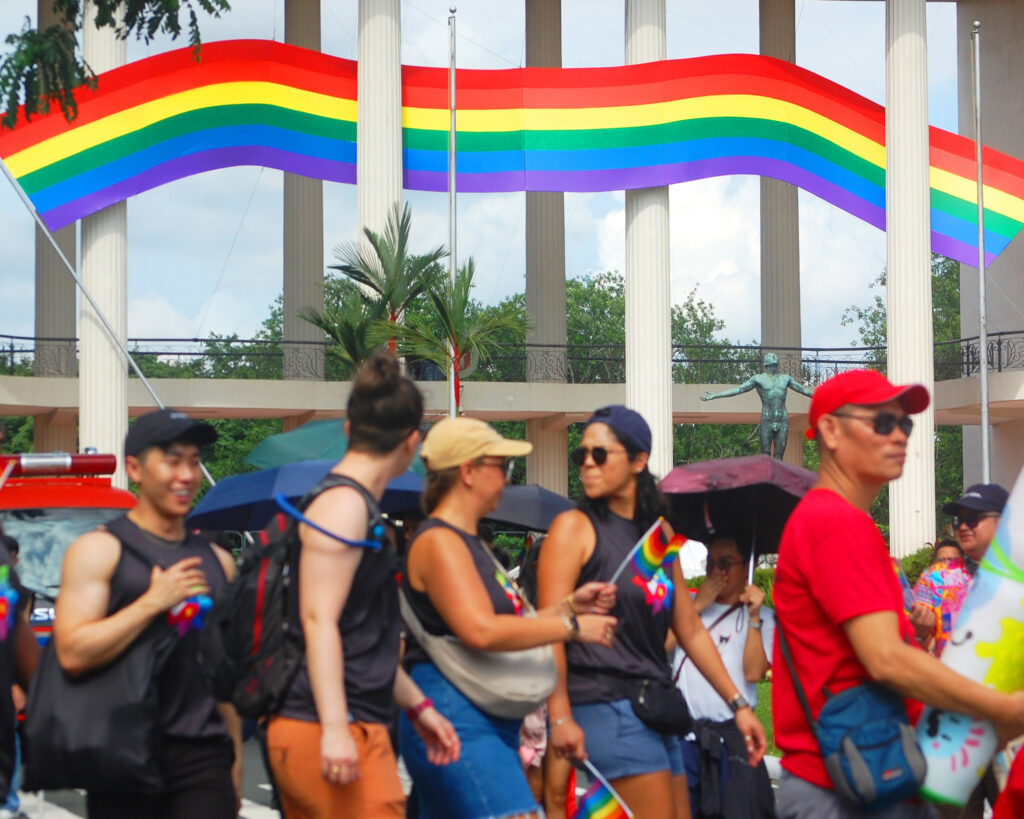
This year, QC’s Pride event—dubbed LOV3LABAN 2025—was held on June 28, the same date in 1969 when queer people in New York began clashing with police following the latter’s violent raid on the Stonewall Inn, a queer-friendly bar. That uprising is widely regarded as the beginning of the modern queer rights movement. Since 1970, queer communities have commemorated the event every June—eventually leading to the month being recognized as Pride Month in various parts of the world.
In the Philippines, the first official Pride parade happened on June 26, 1994. In QC, a march was organized by the Metropolitan Community Church Manila and the Progressive Organization of Gays in the Philippines (also known as PROGAY Philippines.) While Cendaña acknowledged the importance of this event, he believes that the “mother” of queer marches in the country happened two years earlier. On March 8, 1992, during a parade commemorating International Women’s Day, the unprecedented happened: a group of lesbians formed a contingent and joined the march.
For Cendaña’s part, his first Pride march took place years later. It was in Malate—then known as the “gay capital” of Metro Manila—at a parade organized by the Reach Out Foundation. At the time, he was still in college and had yet to come out to his parents. So, he walked beneath a large rainbow flag. He and other closeted marchers would take cover under it whenever they came across members of the media.
Back then, there were only about 150 participants. These days, Pride events often draw crowds in the hundreds of thousands. Just last year, an estimated 228,000 people attended the Pride gathering in QC—reportedly making it the largest Pride event in Southeast Asia in terms of attendance. The crowd was so massive that it clogged the entrance to the Quezon Memorial Circle, where the march culminated, preventing some from getting in. Among those stuck outside were Cendaña and his staff.
This year, LOV3LABAN 2025’s Pride march and the subsequent celebration were hosted by UP Diliman, with the main gathering held at the roughly five-hectare Sunken Garden. The open layout of the area helped ease congestion, especially compared to the more enclosed Quezon Memorial Circle.
The downside of this venue, however, became apparent to Cendaña and his team on the 23rd. Outside his office, typical June weather was unfolding: it was dark, it was cold, and it was wet. It was the kind of weather that makes places like the Sunken Garden muddy.
“Mag-mamarch pa ba tayo, Mader [Will we be marching, mother]?” asked Daria Barra, a member of Cendaña’s staff.
He answered by telling them to prepare rainboots because, on the day itself, they did; they marched—like a lot of other people who knew that as far as the advancement of queer rights in the Philippines is concerned, there’s still a long way to go.

